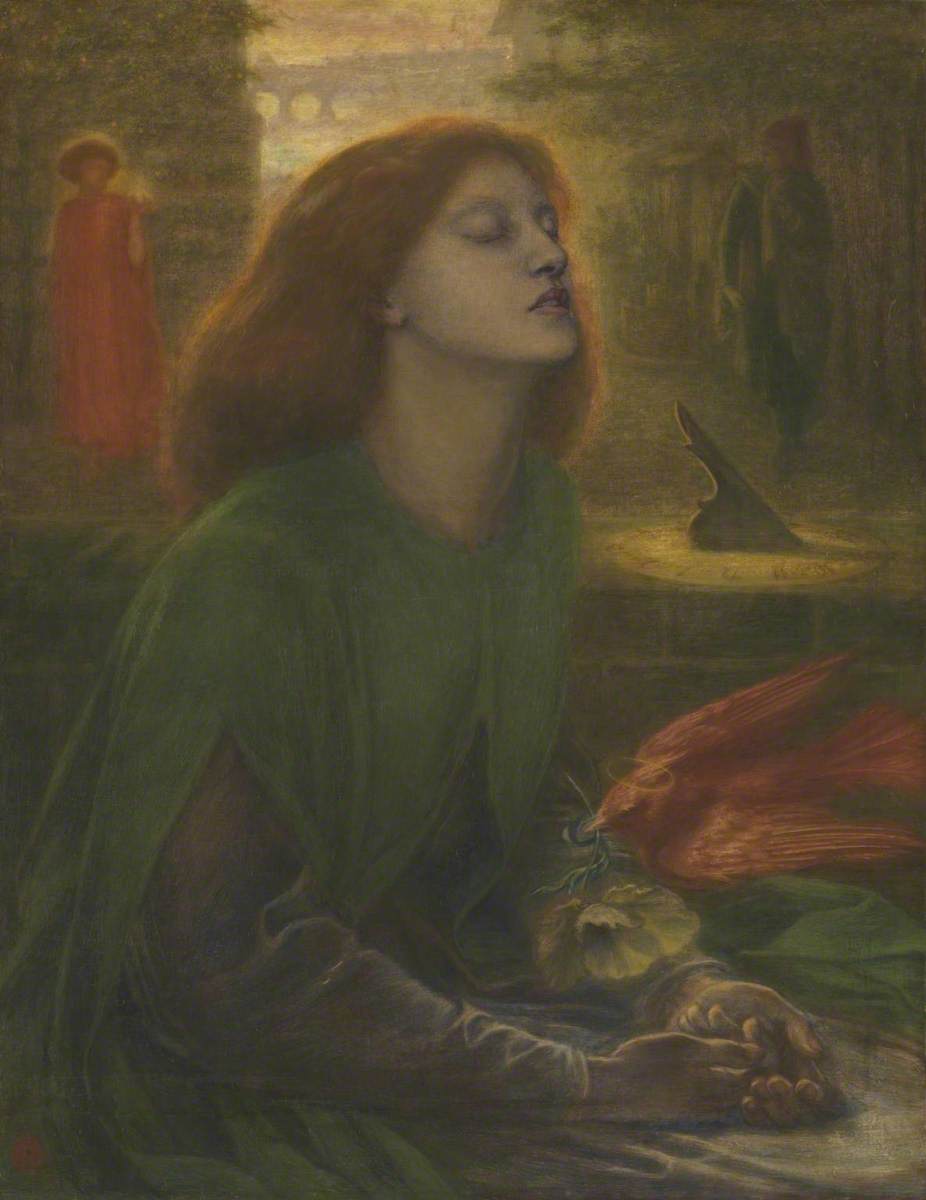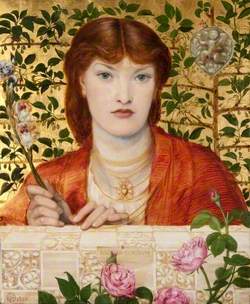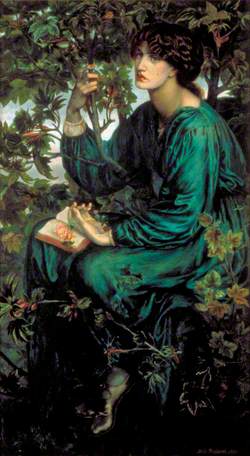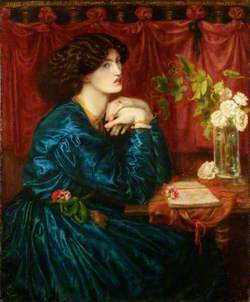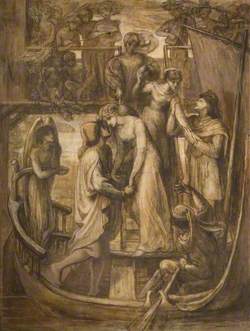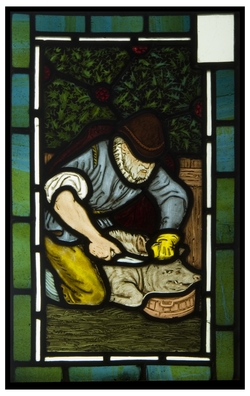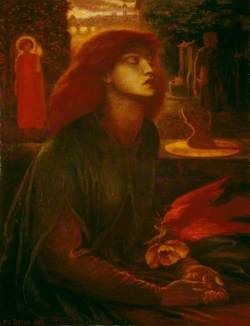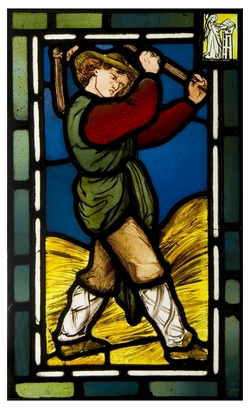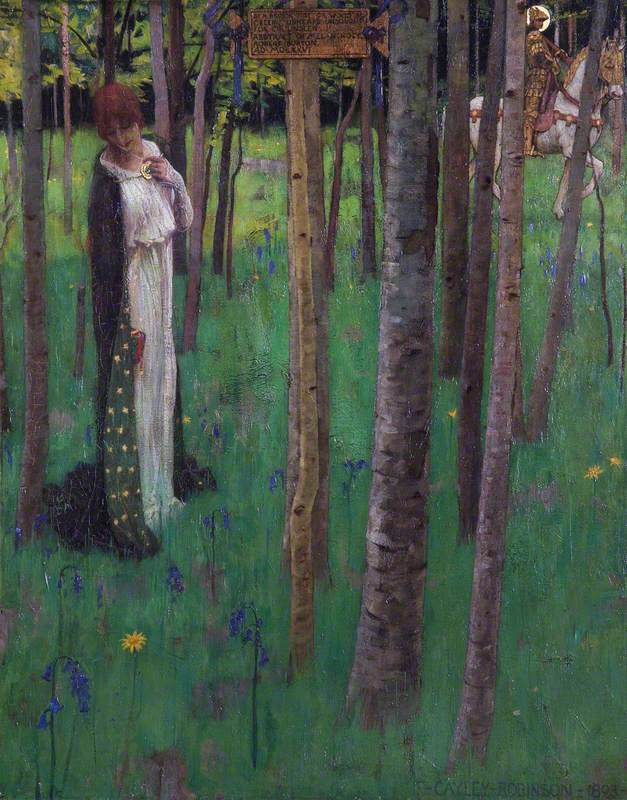How you can use this image
This image is available to be shared and re-used under the terms of the Creative Commons Attribution-NonCommercial-NoDerivatives licence (CC BY-NC-ND).
You can reproduce this image for non-commercial purposes and you are not able to change or modify it in any way.
Wherever you reproduce the image you must attribute the original creators (acknowledge the original artist(s) and the person/organisation that took the photograph of the work) and any other rights holders.
Review our guidance pages which explain how you can reuse images, how to credit an image and how to find more images in the public domain or with a Creative Commons licence available.
DownloadNotes
Add or edit a note on this artwork that only you can see. You can find notes again by going to the ‘Notes’ section of your account.
Rossetti draws a parallel in this picture between the Italian poet Dante's despair at the death of his beloved Beatrice and his own grief at the death of his wife Elizabeth Siddal, who died on 11 February 1862. Dante Alighieri (1265–1321) recounted the story of his unrequited love and subsequent mourning for Beatrice Portinari in the 'Vita Nuova'. This was Rossetti's first English translation and appeared in 1864 as part of his own publication, 'The Early Italian Poets'. The picture is a portrait of Elizabeth Siddall in the character of Beatrice. It has a hazy, transcendental quality, giving the sensation of a dream or vision, and is filled with symbolic references. Rossetti intended to represent her, not at the moment of death, but transformed by a 'sudden spiritual transfiguration' (Rossetti, in a letter of 1873, quoted in Wilson, p.
In the background of the picture the shadowy figure of Dante looks across at Love, portrayed as an angel and holding in her palm the flickering flame of Beatrice's life. In the distance the Ponte Vecchio signifies the city of Florence, the setting for Dante's story. Beatrice's impending death is evoked by the dove – symbol of the holy spirit – which descends towards her, an opium poppy in its beak. This is also a reference to the death of Elizabeth Siddall, known affectionately by Rossetti as 'The Dove', and who took her own life with an overdose of laudanum. Both the dove and the figure of Love are red, the colour of passion, yet Rossetti envisaged the bird as a messenger, not of love, but of death. Beatrice's death, which occurred at nine o'clock on 9th June 1290, is foreseen in the sundial which casts its shadow over the number nine. The picture frame, which was designed by Rossetti, has further references to death and mourning, including the date of Beatrice's death and a phrase from Lamentations 1:1, quoted by Dante in the 'Vita Nuova': 'Quomodo sedet sola civitas' ('how doth the city sit solitary'), referring to the mourning of Beatrice's death throughout the city of Florence.
Further reading: Leslie Parris (ed.), 'The Pre-Raphaelites', exhibition catalogue, Tate Gallery, London 1984, reprinted 1994, p.209; reproduced p.208, in colour. Virginia Surtees, The Paintings and Drawings of Dante Gabriel Rossetti (1828–1882): A Catalogue Raisonné', 2 vols., Oxford 1971, pp.93–94, no.168, reproduced pl.238. Andrew Wilton and Robert Upstone (eds), 'The Age of Rossetti, Burne-Jones & Watts: Symbolism in Britain 1860-1910', exhibition catalogue, Tate Gallery, London 1997, pp.154–157, no.44; reproduced p.154, in colour. Frances Fowle 7 December 2000
Title
Beata Beatrix
Date
c.1864–70
Medium
Oil on canvas
Measurements
H 86.4 x W 66 cm
Accession number
N01279
Acquisition method
Presented by Georgiana, Baroness Mount-Temple in memory of her husband, Francis, Baron Mount-Temple 1889
Work type
Painting
